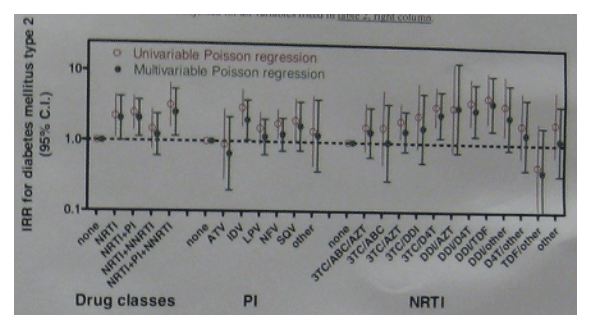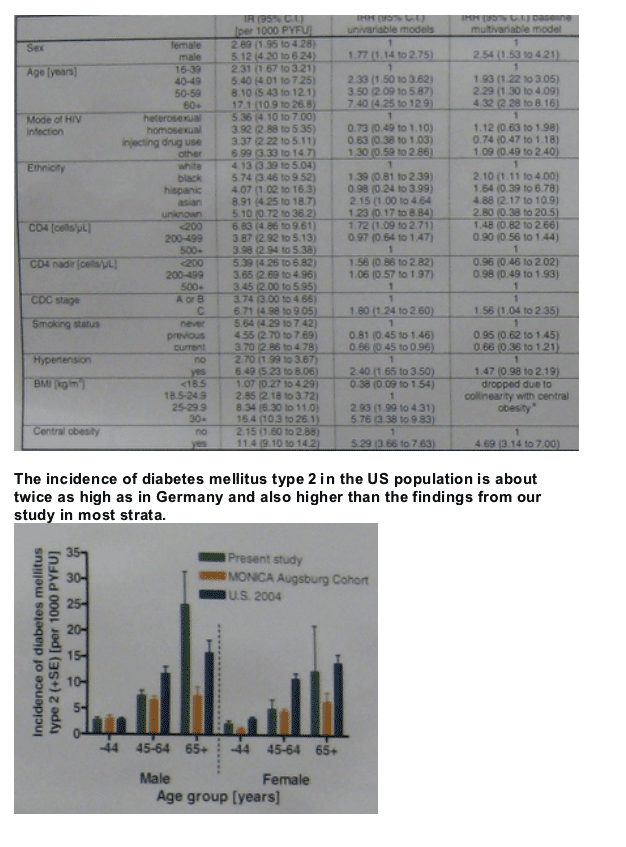 |
 |
 |
| |
Factors Associated with the Incidence of Diabetes Mellitus Type 2 in HIV-Infected Participants of the Swiss HIV Cohort Study
|
| |
| |
Reported by Jules Levin
CROI, Feb 2007, Los Angeles
Similar to the HIV seronegative population known factors such as male sex, older age, African or Asian ethnicities and obesity were strong predictors of diabetes mellitus type 2.
The aim of the study was "to assess the impact of hepatitis co-infection on the development of new onset DM in the Swiss HIV Cohort taking into account changes in anthropometric risk factors and ART therapy during follow-up".
The authors concluded "the association of the incidence of diabetes type 2 with HCV or HBV coinfection was not significant". Perhaps this means that after adjusting for other variables including current ART therapy and central adiposity then HCV or HBV status were not significantly associated because among HIV-negative individuals diabetes is associated with HCV.
Incidence rate ratios for the development of new onset diabetes based upon 123 events during 23, 798 person years of follow-up of 6513 participants. Shown are associations with currently being on specific drug classes (left) and on individual PI and NRTI combinations (right). Multivariate Poisson models were adjusted for all variables in table 2, right column. Current but not cumulative intake of several drugs and combinations was related to the development of diabetes type 2, in particular indinavir, lamivudine/stavudine, didanosine/stavudeine or didanosine/tenofovir.

Table 2. Univariate and multivariate Poisson regression of baseline demographic, clinical and anthropometric covariables potentially affecting the risk of developing DM based upon 6513 individuals with 123 events.
Increasing age significantly increased the risk for developing diabetes. Of note with a reference risk of 1 for age 16-39, individuals 40-49 had increased risk ratio of 1.93, persons 50-59 had an increased risk ratio of 2.29, and for individuals over 60 the risk increased over 4-fold (risk ratio: 4.32). Central obesity: risk ratio of 4.69. Hypertension: risk ratio of 1.47.

|
| |
|
 |
 |
|
|